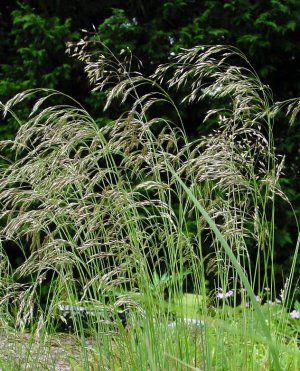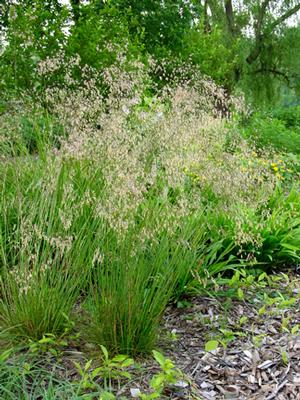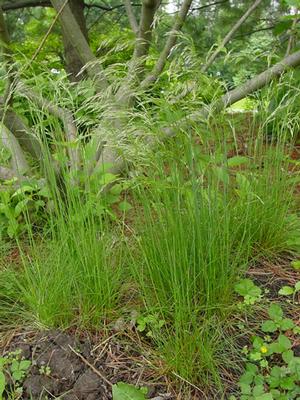Deschampsia flexuosa
Common: wavy hairgrassDeschampsia flexuosa LP50 - 50 per flat
- Height: 6"-18"
- Spread: 1'-2'
- Spacing: 12"
- Hardiness Zone(s): 4-8


Deschampsia flexuosa LP50 - 50 per flat


A delightful and elegant native, this diminutive grass thrives in dry shade. Fine-textured and delicate in appearance, it is tough and drought tolerant, ideal for planting in any well-drained shady location as a groundcover. In spring it is topped with graceful feathery flowers that are lovely as they move quietly in the breeze.
Grow in shade or part shade, average to dry soil with good drainage. Cut back seed stalks in late winter to early spring. To propagate, divide in spring or fall.
A delightful and elegant native, this diminutive grass thrives in dry shade. Fine-textured and delicate in appearance, Deschampsia flexuosa is tough and drought tolerant, ideal for planting in any well-drained shady location as a groundcover. In spring it is topped with graceful feathery flowers that are lovely as they move quietly in the breeze. A cool season bunchgrass with a mounding habit, Deschampsia flexuosa has elegant, finely-textured foliage that grows 12” tall with inflorescences reaching 30” and spreading up to 2’ wide. The panicle flowers turn gold come late summer and fall, adding a lovely textural feature to the shade garden.
Deschampsia flexuosa is a circumglobal species, spanning from the northern hemisphere across North America to Europe to Asia. Growing in dry cool climates from forest clearings, open woodlands, rocky slopes, and shorelines, it even thrives in disturbed sites. The plants can tolerate drought and have a preference for acidic soil. They grow in partial shade to full shade in well-drained soils in mesic or xeric soils. To maintain a tidy appearance, cut back old growth in late winter or early spring.
We find it to work in great in combination with Phlox divaricata, Carex plantaginea, and ferns in our shade gardens, providing a groundcover and erosion control in sloping areas. Deschampsia is host to over 40 Lepidopteran species worldwide and the foliage is a plant food host to several different butterfly species larvae.